You may have see on some of our productions and in other corporate films the use of Ariel shots of locations and buildings. How Do We Do that?
Unfortunately most corporate budgets don’t run to the amount where we can hire in a helicopter so thankfully if a production does indeed require such shots we now can turn to the use of Radio-controlled helicopters, Quadcopters or more commonly known as drones.
These shots have been a pipe dream of videographers & film makers for decades. Until recently, cameras have been too heavy, or the use of video tape was too prohibitive to make them practical. Small battery powered Helicopters either couldn’t get off the ground, or tapes would be degaussed by the electromagnetic fields put out by the motors.
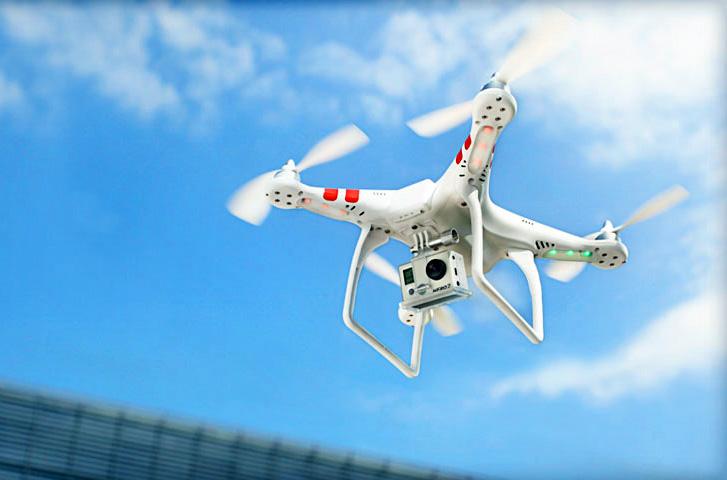
So, What is a Drone?
A drone is a simply an aircraft – relatively small – piloted either autonomously by onboard computers or by a remote control on the ground. Drones have been used for military and special operation applications in recent history, but modern technology has allowed companies to manufacturer commercial versions for consumer use.
Camera pans over mountains, stunning vistas, or some other wide-sweeping landscapes can now be achieved using a drone & camera and allow you to capture that same kind of landmark footage, as seen I the high end productions of yesteryear (is that a word?). Instead of relying on a film crew, you now only need a remote-controlled drone. (and someone who knows how to control it).
At Motiv we have used these methods to capture internal and external shots of buildings and landscape shots and integrated these into some of our videos.
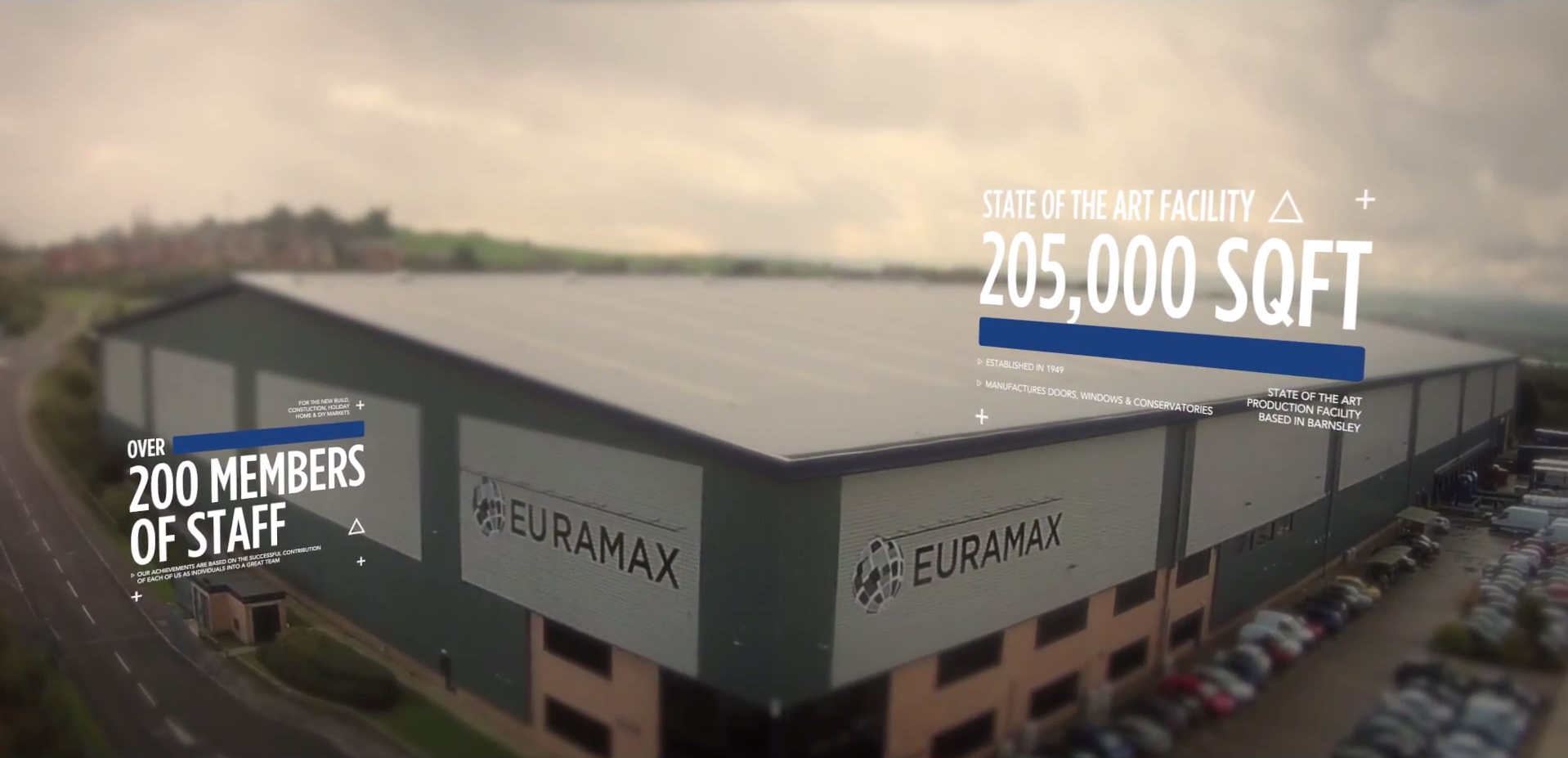
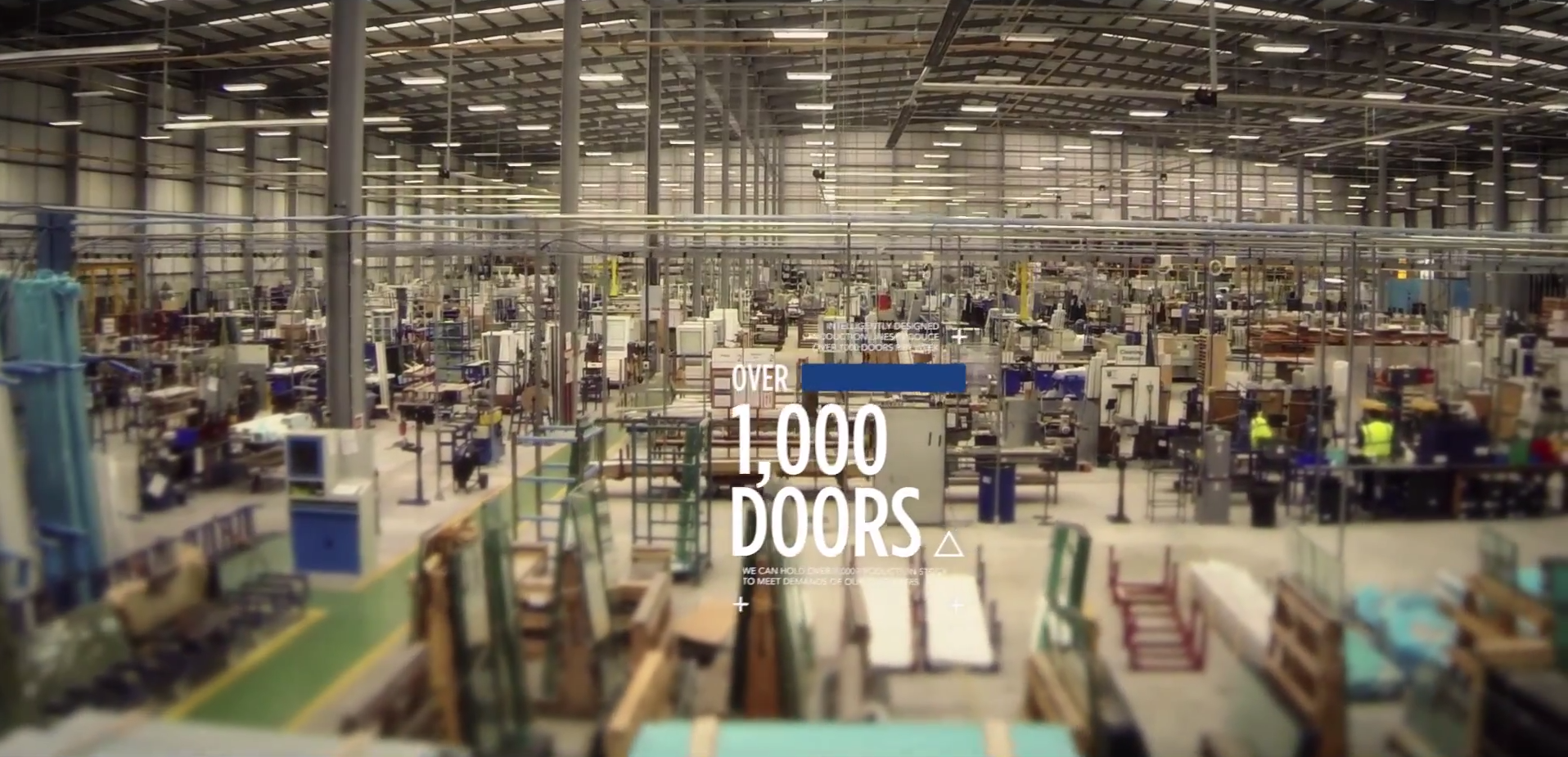
Research Local Laws
Before you send a flying robot into the sky, check your local laws surrounding small unmanned aircraft. For instance, some guidelines stipulate that drones and other model aircraft must stay less than 400 feet above the ground and not within 3 miles of an airport or air traffic. Some places are strict when it comes to trespassing laws as well. Steering a drone over someone’s house and property could be considered as trespassing.
What Kind of Drone?
Having researched local law, you can start the process of finding the perfect drone to suit your needs.
There are a multitude of different drones, UAV’s & Quatcopters available on the market. Fully-assembled models such as DJI’s Phantom series start around £500. If you want a Phantom model that comes with an attached GoPro camera, you’ll have to shell out about twice as much. One of the most highly rated setups currently on the market is the DJI Phantom 2. You’ll also want to look at how long-lasting the battery should be for your purposes and if you want to control the drone via a smartphone or remote.
Another option would be to rent the equipment for the time you need it. There are options to rent the vehicle on its own or with a pilot, so whatever your budget you should be able to find cost effective route to suit your needs.
(We can arrange this for you!)
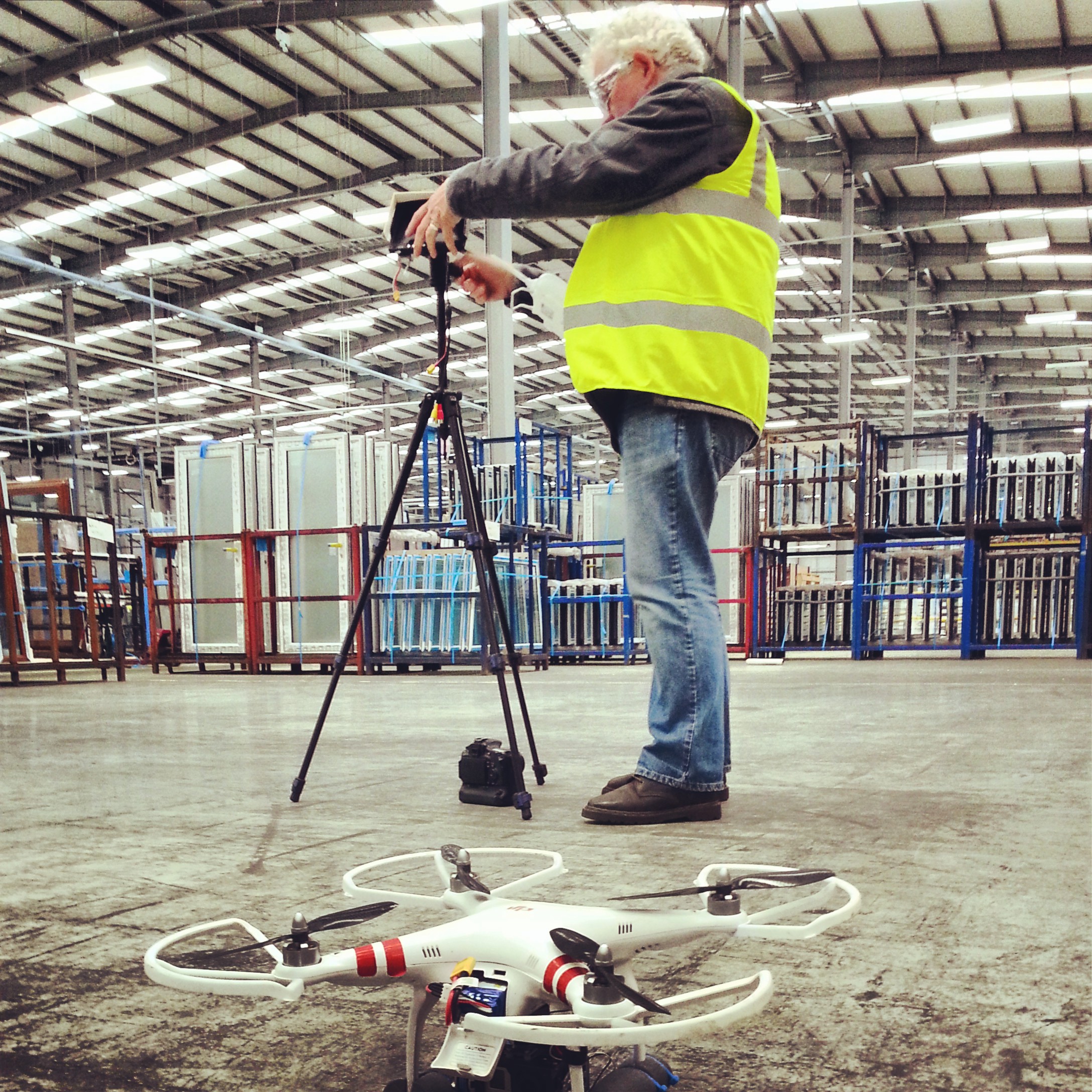
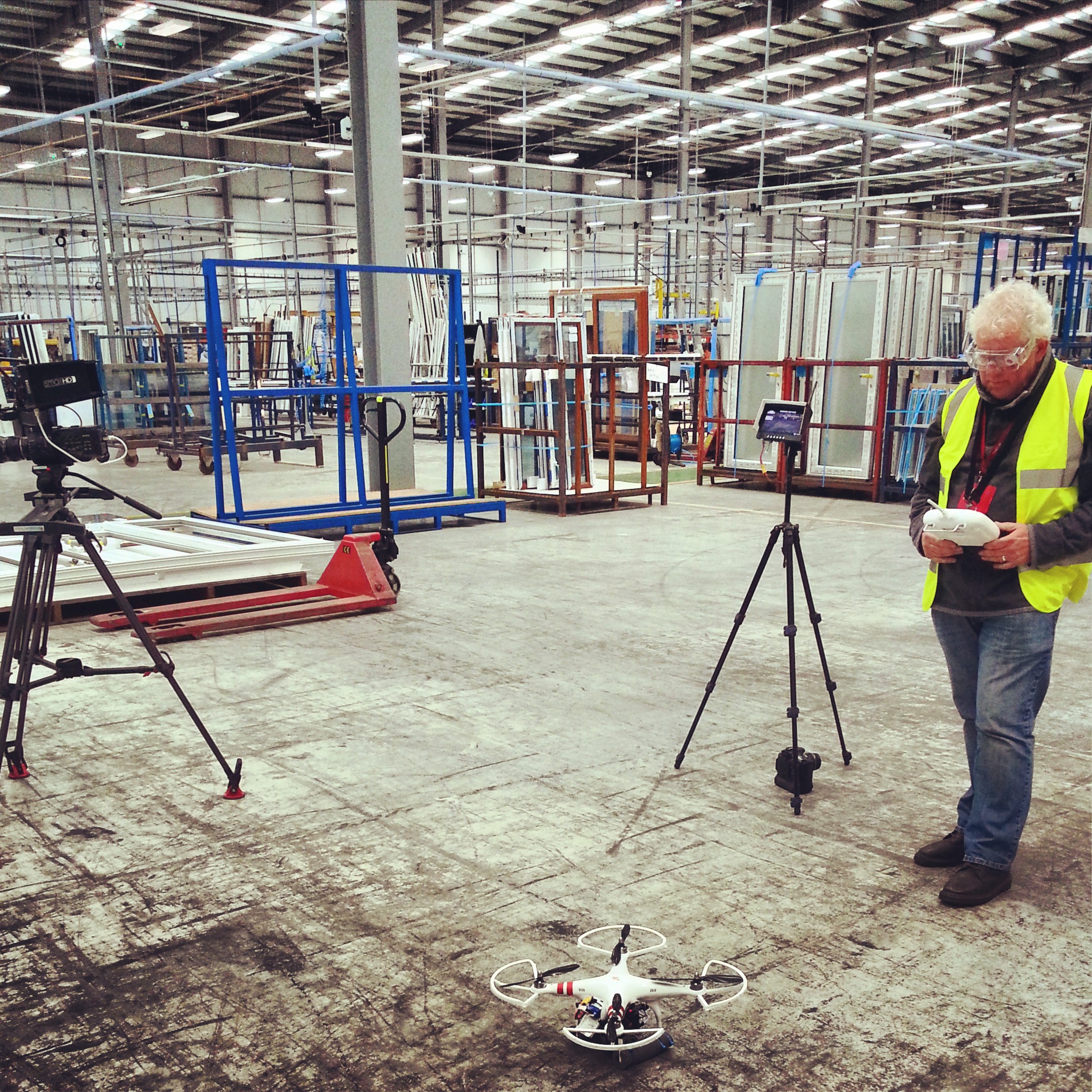
Cameras
You don’t need fancy cameras for aerial photography as long as you ensure there is no vibration, because that’ll completely ruin your footage quality. Vibration can come from the drone, its engine, and air turbulence. Small drones bounce around a lot, for instance, so you’ll need to use vibration isolators and gimbals to eliminate the possibility of vibration. Fast lenses that are sharp at large apertures will help too.
Stabilised aerial video is made possible with the inclusion of gimbals. A gimbal is a support that allows the rotation of an object around an axis. Note that a gimbal with a brushless motor can provide greater power-to-weight ratio. Gimbals for GoPro cameras are available for as little as £150 and can simply be bolted to the bottom of any aerial platform.
Safety
Read anywhere online about how to get started with drone aerial photography and the first thing you’ll come across is ‘practice’. Nothing but time will make you get better at steering or capturing stunning aerial footage.
Always think about what you might hit if your drone crashes. You should never fly over large crowds of people – unless you have a lot of experience and are confidence in your equipment. You should also avoid areas and altitudes where you could collide with manned aircraft or stumble upon unfriendly weather.
Certain low-end and medium-end drones can’t even operate in extremely high altitudes because of the thin air (and their motors tend to freeze), so you’ll want to analyse all the types of environments that both you and your drone can handle before attempting any flight.
We have seen the rise of this technology over the last few years and now that it has become more affordable, many companies and enthusiasts have integrated the use of drones and aerial photography into their productions, the results of which, on occasion, have been really impressive.
Please contact us to discuss the use of drones in video production and indeed if you are looking for such a service or production that includes aerial shots.




